Is the US dollar about to stage the mother of all comebacks?
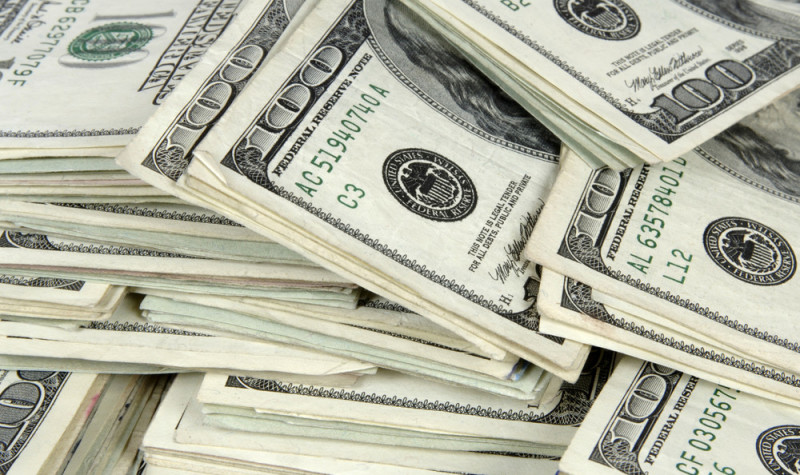
Since April of this year, the US dollar has been under a reasonable amount of pressure, as investors flocked back to riskier assets. But the more recent price action suggests this pessimism towards the greenback could be undergoing a change – and there is a little-known way of taking advantage of any resurgence.
Investors flip-flopping towards the Greenback
You do not need me to tell you that this has been quite the year. When financial columnists come to write their reviews of 2020, they are not going to be stuck for content. As Covid-19 spread in the first quarter of the year, investors really hit the panic button in March and stock markets plunged. Plenty of riskier assets followed suit – but the US dollar was one that found favour, as can be seen in this chart of the pound/US dollar exchange rate (GBP/USD).
GBP/USD – December 2019 to March 2020
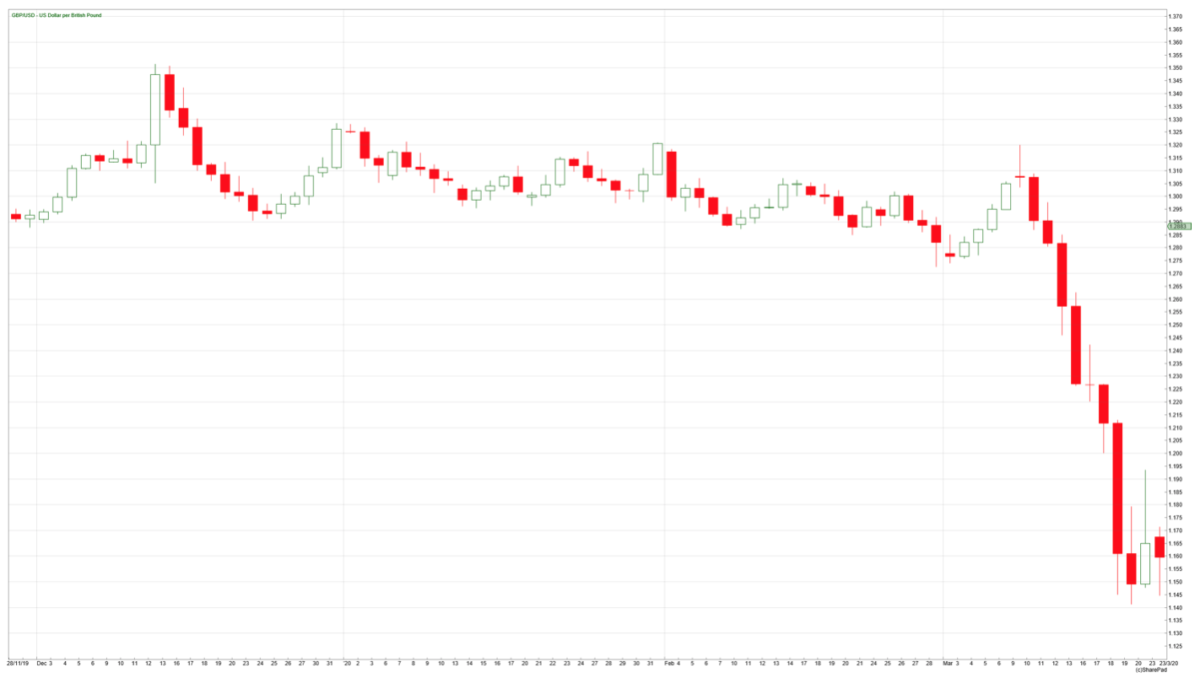
In December 2019 the GBP/USD exchange rate hit its highest in 18 months, trading around the 1.35 area – but by the end of March it had been as low as 1.14, a fall of 15%. This was actually the lowest the pound had been versus the US dollar since 1985.
The best way of trading the dollar?
As with all currencies, the pound doesn’t move in insolation. If it is weakening, then something else is strengthening. We can view the fall in March this year as pound weakness, OR US dollar strength. And actually, it was the resurgence of the dollar that saw most of the other currencies lose their purchasing power. The best way of viewing the US dollar in my view, and a market that many are not even aware of, is the US Dollar Index. Here’s a chart for the year so far.
US Dollar Index (DXY) – year to date
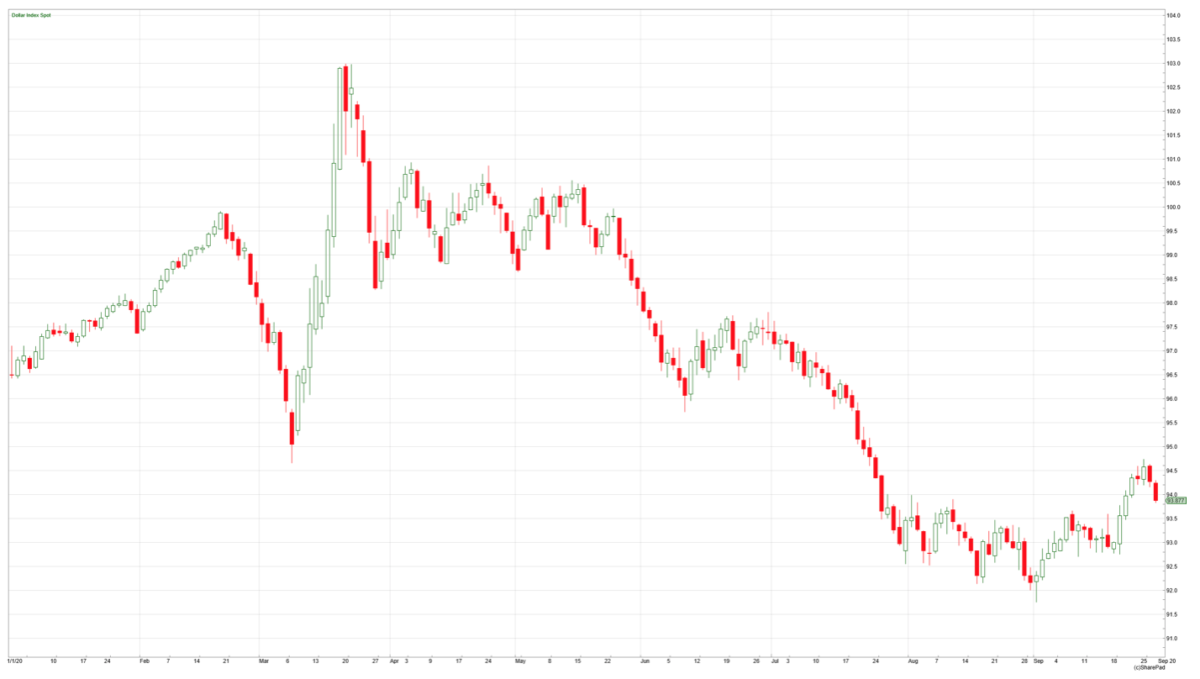
When it comes to trading the foreign exchange markets, most people tend to gravitate to the familiar: for example, GBP/USD as mentioned above, but the euro/US dollar exchange rate is also one of the most popular. And these of course are perfectly fine markets to trade. But for getting a broader view of the dollar, in my view you can’t beat the US Dollar Index (or dollar basket as it is sometimes referred to) as shown in the chart above. It’s the US dollar quoted against a mix of different currencies in various weightings. The major weighting is still towards the euro, but also in the mix are the pound, Japanese yen, Canadian dollar, Swedish krona, Swiss franc etc.
You can trade this market like any other – whether using spread betting or some other format. There is a two-way price, so it is possible to buy or short-sell. It is not quite a 24-hour market with some brokers, as it tracks the futures market hours – but it is still available to trade for around 23 hours of the day during the trading week, which is perfectly adequate.
Investors looked for a safe haven – but only briefly
Back to the movements in the US Dollar Index earlier this year. It can be seen that the index surged in March. This was as other more riskier assets, such as shares, plummeted in value – investors were looking for a “safe” destination for their cash and the US dollar has often been seen as the world’s reserve currency.
But of course, as a way of battling the economic impact of the virus, the US central bank, the Federal Reserve, dropped its base rate to near zero and put in other measures to try to support the economy and markets. It was not alone here – plenty of other governments and central banks around the world acted similarly.
The net effect of all this was that investors were happy to embrace risk again, shift their funds back into shares and other currencies and commodities. They turned their back on the US dollar – and by the beginning of September the dollar index had dropped by 11% from the March high.
The Dollar Index has been weak – but it could be a buying opportunity
US Dollar Index – 2011 to present day
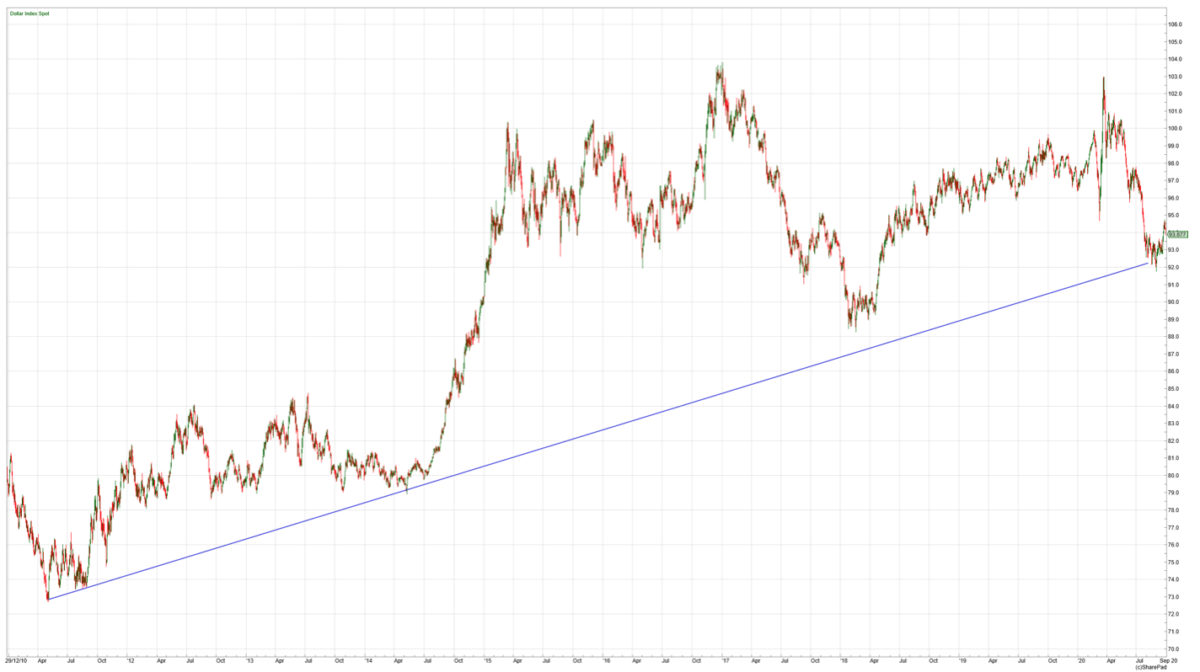
Admittedly this is a very long-term view, all the way back to the start of this uptrend off the lows in April 2011. But it does show a clear trend in place and using the simple trend line approach to charting, if a recovery is going to start from anywhere, then this is the place.
The US Dollar Index is one that is always worth keeping an eye on, as movements here will clearly impact the likes of the pound, euro and the yen – but also the price of popular markets such as gold and silver, which tend to move inverse to the US dollar. Given where the index is from a historical point of view, I do think there are some strong arguments to expect what could be a reasonable recovery in the months ahead.
The downside move has over-extended
We have seen an incredible recovery in the US stock market since the March lows. The tech-biased NASDAQ indices have been setting fresh all-time highs since June; the broader S&P500 index has not been as impressive – but still moved out to a new high in August and continued this into September. If investors feel that, perhaps (in the short-term at least), the bounce back in stock markets has got a little over-heated, then safer havens such as the US dollar could benefit from a shift in asset allocation.
There is also the US Presidential Election to come in November. At the moment the polls are pointing to a win for Mr. Biden. Leaving the politics aside, any major political event like this does create uncertainty – and in these sort of times, safer assets can often flourish.
Plus, as there could be a change in US leadership and policy, what does this mean when it comes to helping to support the economy? It seems unlikely that further stimulus will be put in place this side of the election, so that still leaves a decent window when the moves in the US dollar will be untroubled by tinkering by politicians.
Going back to the central bank actions, it ties into a popular price-action approach that I have mentioned before which can give us a clue as to a change in direction for a market. The dog that didn’t bark signal!
The US dollar is not doing what might be expected
The Dog That Didn’t Bark Trading System™ is not a new idea and comes from a Sherlock Holmes story, “Silver Blaze”. The gist of the story concerns a racehorse stolen from some stables, the dog there did not bark during the theft, suggesting that the dog knew the identity of the horse rustler and was not alarmed. The dog reacted differently to how the casual observer might have expected it to.
Stick with me on this, as I am going to pull it all together for the US dollar. Recent announcements from the US central bank have reinforced its commitment to a near-zero interest rate policy. It has also said that rates will stay low even if inflation creeps up, and it is open to taking more action to support and boost the US economy. All of this would be expected to weigh on the US Dollar index – it is bearish news for the currency. But look at the performance in recent months.
US Dollar Index July to present day
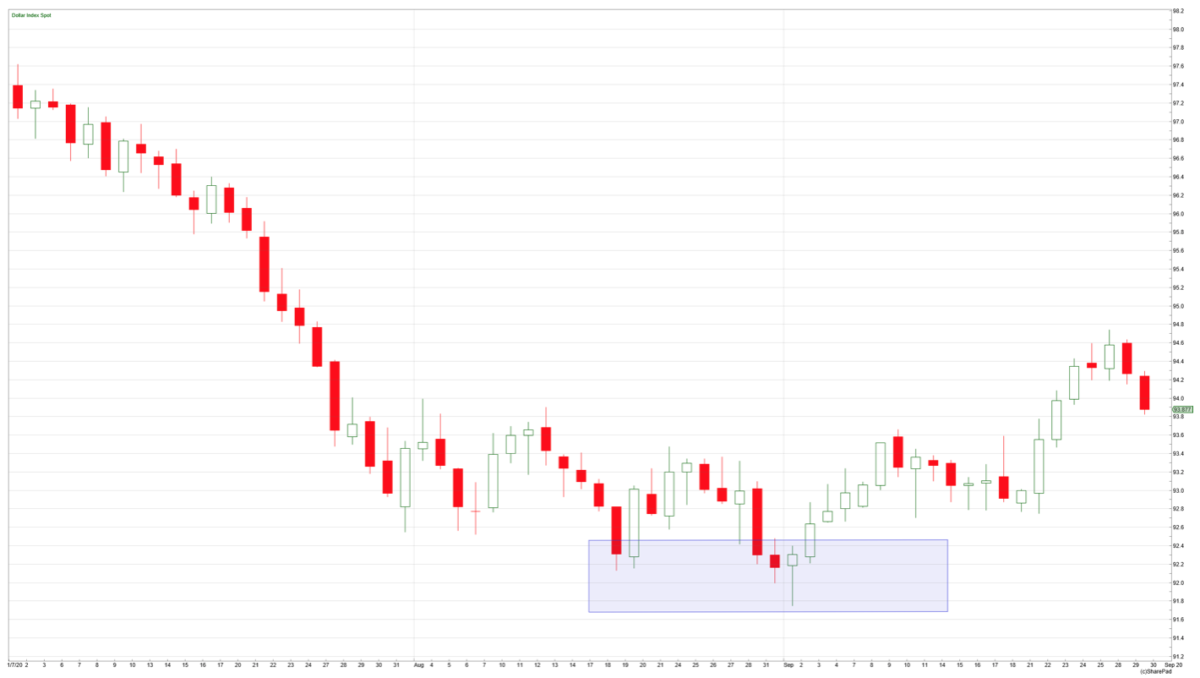
Since mid-August, the Dollar Index has tried to push lower. There have been ongoing statements that should be negative for the US dollar. But, following an initial move to new lows for the sell-off that started in April, the weakness has not followed through. So, our “dog that didn’t bark” approach comes in here – the US dollar is not reacting as we may expect. This can suggest that all of the bad news is already being reflected in the price, and sentiment may well be on the turn. This is further enforced by the uptrend that has been in place since the early September low.
The trading opportunity
To my eyes, this makes it a very interesting market. If the dollar was to break below that September low – around the 91.70 level on the chart above, but it may be different for you depending on your chosen broker – then hopes for a recovery are negated. As we could be in the early stages of a turnaround for the market, this makes the risk versus reward very attractive. The dollar index at the time of writing is only a couple of hundred points above that September low, and around 900 points below the March high. If that longer-term uptrend is going to resume, there is a lot of potential upside from current levels, for a relatively low level of risk from a stop-loss point of view.
I think it is definitely one of the more interesting markets to watch as we head into the last quarter of 2020.

Comments (0)